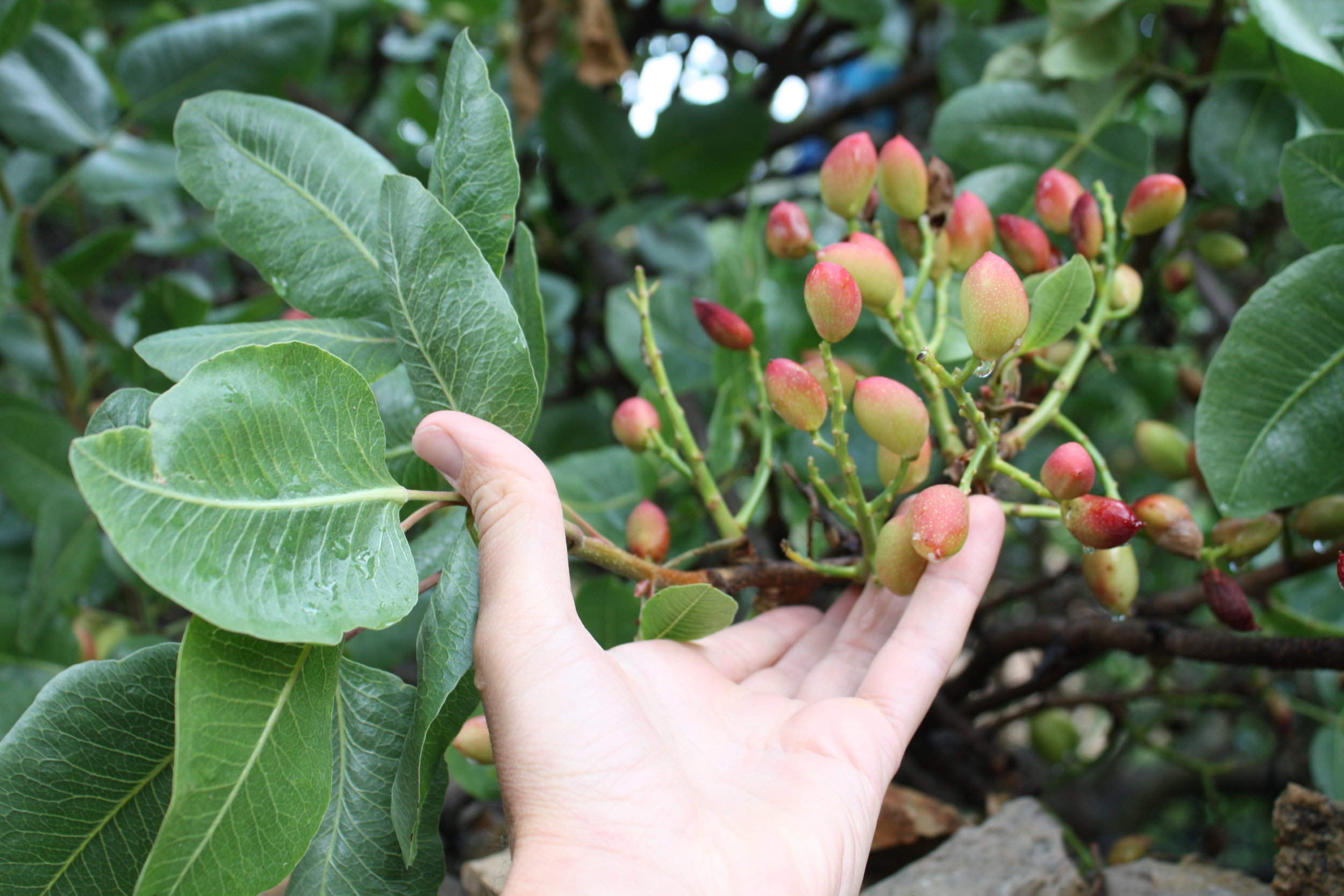Pistachio is a member of the Anacardiaceae family and a close relative of Cashew, Mango, and Spondias spp., among others. Pistachio is native to the Middle East where, not long ago, there were extensive forest populations of pistachio trees on hills and mountains from Lebanon to Northern Iraq and Iran, some of these stands may still persist. Local tribespeople are said to collect from wild trees in Afghanistan and Iran.
The tree is suited to a hot, dry climate and require a long hot summer for fruits to mature. Additionally they have a high chilling requirement.
Pistachio have been used as long ago as 7000 BC. In the first century AD the pistachio was introduced by Syria to Italy as a food crop, its cultivation subsequently spread throughout Mediterranean countries. Today, major Pistachio producing countries of the world include Greece, California, Lebanon, Syria, India, Spain, Cyprus, Italy, Pakistan, Israel, Turkey, and Australia.
Pistachio trees have a long life-span, 700 year old trees have been recorded, they are slow growing and prefer a full sun environment and deep, well-drained soil. They are fairly tolerant of wind. Pistachios have the unique ability among commercial tree crops to grow in a wide variety of soil conditions ( stony calcareous, highly alkaline, acidic, saline, etc. ). This being the case, however, they cannot tolerate wet or damp climates. Wind and rain during pollination can reduce fruit-set.
